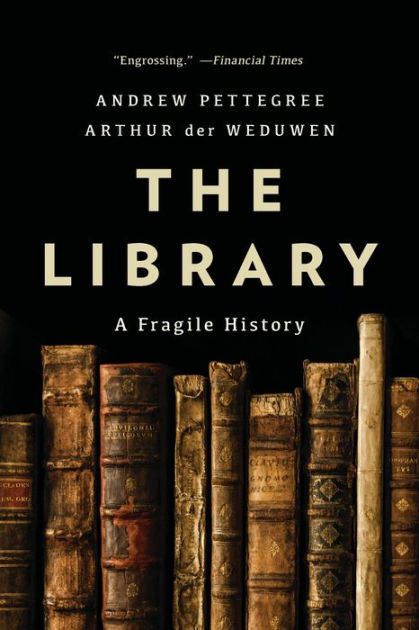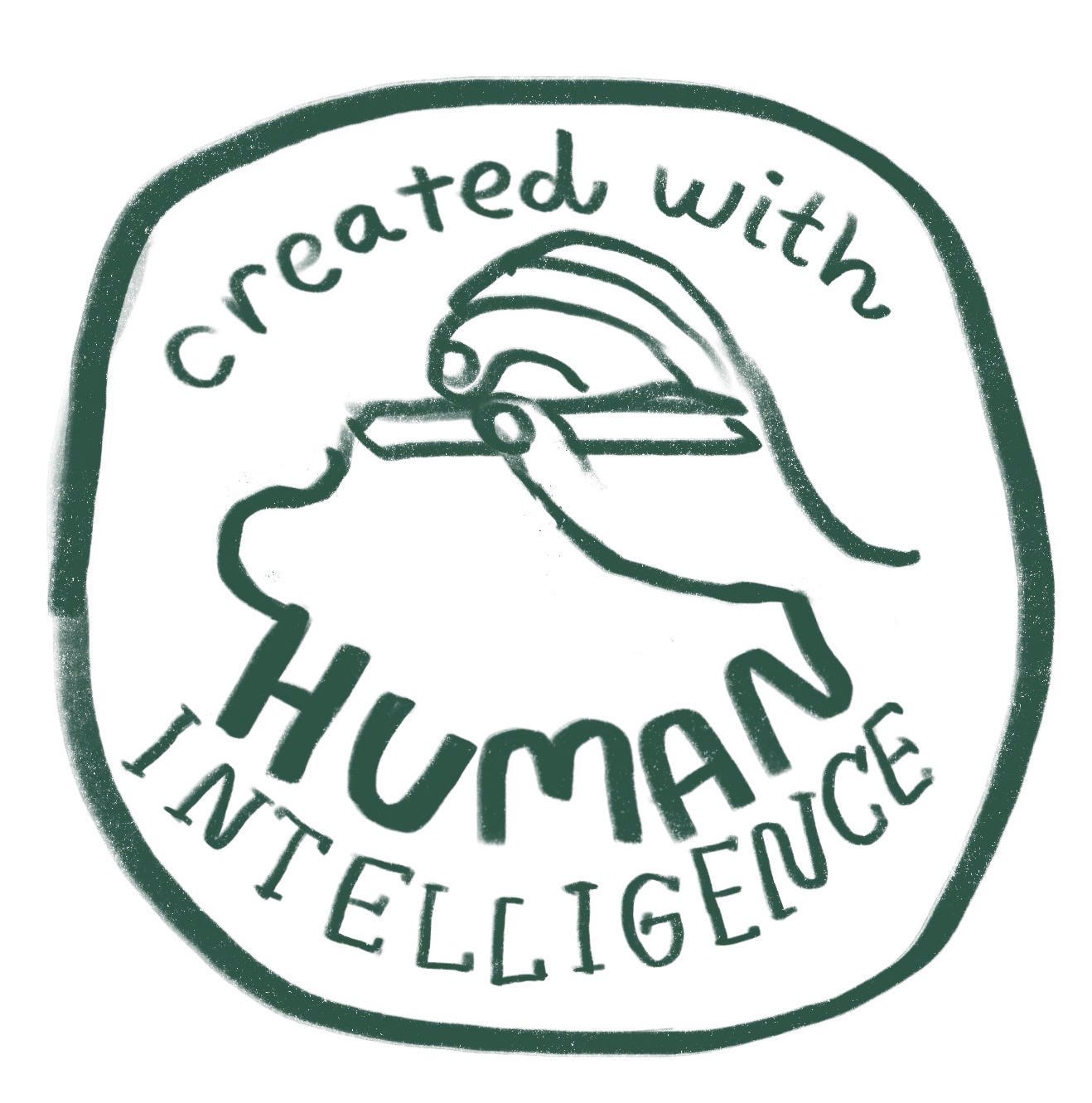Exploring Life and Literature
Dear Friends,
The idea of the library carries with it an almost sacred weight. It conjures images of vast, echoing halls lined with endless shelves, the hallowed temples of human thought. Yet in The Library: A Fragile History, Andrew Pettegree and Arthur der Weduwen offer a powerful corrective to this romantic ideal. They present instead a narrative that is as much about loss as it is about preservation, as much about the tensions of ownership and exclusion as it is about the democratization of knowledge. Their history is a sweeping, intricate exploration of libraries not as monolithic institutions but as evolving, fragile entities—constantly imperiled, reshaped, and reinvented across centuries.
From the book’s earliest pages, Pettegree and der Weduwen make it clear that libraries are as mortal as the societies that birth them. As they write, "Libraries have been lost not only through neglect, but also through deliberate destruction, theft, fire, and flood. Libraries have been political targets, trophies of war, and victims of religious zeal." This fragility—both literal and conceptual—lies at the heart of their project. Libraries, they argue, are not inevitable achievements of civilization, but precarious constructions, always at risk from forces political, economic, and cultural.
The authors take the reader on a chronological journey beginning in the ancient world, weaving through the Middle Ages, the Renaissance, the Enlightenment, and into the modern era. At every step, they show how libraries evolved alongside human societies’ shifting priorities. Early libraries were not public spaces but elite archives: places for monarchs, priests, or scholars to store texts that buttressed their authority. In medieval monasteries, the library was less a place of public enlightenment than a treasury of the sacred—a carefully guarded collection of religious works, mostly inaccessible to the laity. Access to knowledge was power, and controlling books was an extension of political and spiritual control.
One of the most striking themes in The Library is how deeply libraries have been tied to the nature of ownership. The printed book, a symbol today of mass literacy, was in its infancy a luxury item, more expensive and rare than many imagine. Building a library was a financial and social statement; to own books was to demonstrate status. The Renaissance saw the proliferation of private libraries among the merchant classes, but these remained private retreats rather than public institutions. Even as cities founded “public” libraries, they often demanded costly memberships or were accessible only to select citizens. The library, far from being an open invitation to all, was a gate kept tightly shut.
"For much of their history, libraries were places of privilege rather than public benefit—collections to be admired, not consulted."
Pettegree and der Weduwen masterfully detail the precariousness of early collections. Fires, floods, revolutions, and wars decimated libraries with alarming regularity. The Reformation and Counter-Reformation unleashed iconoclasts who viewed entire libraries as threats to spiritual purity. The French Revolution, while championing the Enlightenment ideals of universal access to knowledge, simultaneously saw the destruction of countless aristocratic and ecclesiastical libraries. Ironically, revolutions that sought to liberate ideas often led to their mass obliteration.
Throughout, the authors show that the survival of libraries has often depended on the quirks of individual visionaries—sometimes selfish, sometimes altruistic—who fought to preserve collections. They remark, "The survival of a library is often the story of the survival of one individual’s obsession, resilience, or sheer stubbornness." They highlight figures like Sir Robert Cotton, whose personal passion for collecting manuscripts helped preserve much of England’s medieval history. Yet even such heroes could be imperfect; Cotton’s personal hoarding often kept treasures away from broader audiences. The tension between private ownership and public benefit recurs repeatedly, reflecting a broader struggle over who should control knowledge, and for what purposes.
The arrival of the printing press reshaped the library’s identity but did not immediately democratize it. Although more books became available, they also became more ephemeral. Cheap printed works—pamphlets, almanacs, political tracts—flooded the market, and libraries often ignored them, considering them unworthy of collection. This exclusion had long-term consequences, as vast swathes of popular culture were lost to time because libraries focused on preserving only what they deemed “serious.” Pettegree and der Weduwen remind readers that libraries are shaped by human choices, and those choices are never neutral. What is preserved and what is discarded reflects prevailing values, prejudices, and blind spots.
"What societies choose to preserve—and what they allow to perish—reveals as much about their values as any monument, battle, or law."
One of the most compelling sections of the book addresses the rise of the modern public library. The nineteenth century, particularly in Britain and the United States, saw a shift toward libraries as tools of public improvement. Reformers, often motivated by a mixture of philanthropy and paternalism, established lending libraries to uplift the working classes. Figures like Andrew Carnegie loom large in this era, donating funds to build thousands of libraries under the belief that access to books would enable self-betterment. Yet even in this era of expansion, tensions remained. Libraries still curated their collections according to moral standards, often refusing to carry novels, detective stories, or any works deemed frivolous or corrupting. Access to information was growing, but it remained deeply managed and moralized.
Pettegree and der Weduwen also delve into the complex relationship between libraries and nation-building. National libraries, like the British Library or the Bibliothèque nationale de France, became symbols of national identity and prestige. Governments invested heavily in such institutions to showcase cultural grandeur and intellectual dominance. These libraries served dual purposes: preserving national heritage and asserting political power. In times of war, they became targets. The Nazis looted libraries across Europe with terrifying systematicity, seeking to control the cultural memory of conquered peoples. The fate of libraries in the twentieth century became, once again, a matter of survival amidst violence and upheaval.
The book does not limit itself to physical destruction; it addresses intellectual threats too. The modern era’s information explosion—television, the internet, digital media—poses new challenges to the traditional library. Why house physical books when information can be accessed instantly online? Why invest in preservation when the culture of reading itself seems imperiled by the brevity and distraction of digital life? Pettegree and der Weduwen note, "Today, with information seemingly ubiquitous, the role of the library is again under scrutiny: it must justify not only its holdings, but its very existence." They argue that libraries today face a crisis not simply of funding but of relevance. If the library is to survive, it must adapt without surrendering its deeper purpose: to safeguard memory against the tides of forgetfulness and fashion.
Yet the authors do not end on a pessimistic note. They celebrate the resilience and adaptability of the library across millennia. They highlight efforts to digitize rare manuscripts, to open archives to broader audiences, to reimagine libraries as community centers and learning hubs. Even as the traditional model of the library faces new pressures, its core mission—preserving knowledge, fostering curiosity, and offering sanctuary—remains as vital as ever. Libraries have endured because they answer a fundamental human need: the desire to know, to remember, to imagine.
In The Library: A Fragile History, Pettegree and der Weduwen craft a narrative that is both sweeping and intimate. They balance grand historical movements with telling personal stories, always attentive to the material realities of book culture. Their prose is accessible without being simplistic, rigorous without being dry. They neither idolize nor dismiss the library; instead, they present it as an evolving human endeavor, as fallible and magnificent as humanity itself.
The book’s greatest achievement is its invitation to rethink libraries not as static, inevitable monuments but as living, contested spaces. In doing so, it challenges readers to recognize that the survival of libraries—and of the collective memory they embody—depends on active, ongoing care. Libraries are not self-sustaining organisms; they require stewards, defenders, and dreamers. They are, in the end, human creations, as fragile and as enduring as the human spirit itself.
Reading The Library: A Fragile History leaves one with a profound sense of gratitude for these repositories of memory—and a sharpened awareness of the perils they face. In an age where information flows more freely than ever but attention grows ever more fractured, the library stands as a quiet, stubborn monument to the slow, deliberate accumulation of wisdom. It is a fragile history indeed, but it is also one of astonishing persistence.
The value of this book lies not only in the richness of its historical detail but in its urgent relevance. As debates rage over censorship, digital access, and the future of reading, Pettegree and der Weduwen offer a powerful reminder: that what is preserved, who has access, and how libraries evolve are questions that will continue to shape the intellectual life of humanity. In understanding the fragility of libraries, we come to understand something deeper about our own vulnerability—and our enduring hopes.
Beyond the Bookshelf is a reader-supported publication. Becoming a paid subscriber is the single most impactful way you can support the mission of exploring the connection between life and literature here at Beyond the Bookshelf. An annual subscription is only $12/year.
If you can’t commit to a paid subscription at this time but would still like to support my work, please visit my support page for a list of other ways you can help keep the lights on.
Until next time,






Matthew, thank you for this timely and enlightening piece. Libraries have come far since they served the privileged and powerful. Toronto, my home for decades, has built one of the best-used public library systems in the world and offers a huge array of free programs and couses to serve community members of all ages. Through the library, you can learn computer skills, explore the history of the city’s first cemeteries, take a guided nature walk, join a writing group and much more. Low-income people can access free admission to local museums through their branch. For many, the library is their only way to go online. During the pandemic, my branch kept my spirits up by ordering books for me. The staff made collecting my books a special occasion. Can you tell I’m a fan of the Toronto Public Library?
Thank you for such a thorough and tender review and reflection of this book and its subject, Matthew. My favorite line is "the library stands as a quiet, stubborn monument to the slow, deliberate accumulation of wisdom." For all the fragility of libraries, and of course how it aligns with our own, I take comfort in this sense of stubbornness, that libraries are so much more than the sum of their parts.